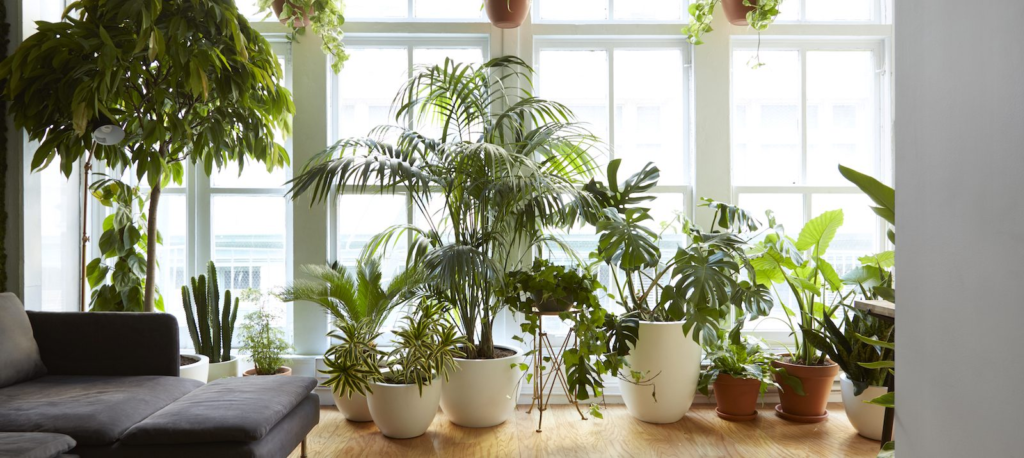Proper bathroom ventilation is essential to maintaining a healthy, comfortable home. Without it, moisture can build up, leading to unpleasant odors, mold, and even damage to your bathroom surfaces. You may have noticed the musty smell or the foggy mirror after a shower, and that’s a clear sign that your bathroom lacks proper ventilation.
Fortunately, improving bathroom ventilation doesn’t always require expensive installations. In this blog, we’ll explore natural ways to boost airflow, reduce moisture, and keep your bathroom fresh. Whether you’re dealing with excess humidity or simply want to prevent mold, these simple solutions will help make your bathroom a cleaner, healthier space.
Table of Contents
Why Natural Ventilation is Essential for Bathrooms
Natural ventilation plays a crucial role in maintaining a healthy bathroom environment. When fresh air circulates, it helps reduce moisture buildup, which is a primary cause of mold and mildew growth. Bathrooms are often humid spaces due to showers and baths, and without proper ventilation, the moisture can lead to various issues like peeling paint, warped wood, and unpleasant odors.
By allowing fresh air and natural light to flow in, you can improve the overall air quality in your bathroom. This not only helps prevent mold but also keeps the space feeling fresh and bright. Natural ventilation is not only an eco-friendly and cost-effective solution but also a key factor in keeping your bathroom dry and comfortable year-round.
Top Natural Ways to Improve Bathroom Ventilation
Improving bathroom ventilation naturally is not only an eco-friendly solution, but it also ensures a healthier and more comfortable space. Below, we dive deeper into the most effective ways to improve air circulation and reduce moisture in your bathroom using simple, natural methods.
1. Open Windows for Fresh Air Circulation
One of the most accessible and effective ways to improve bathroom ventilation is by opening the windows. When you open the windows, fresh air can flow into the bathroom, helping to reduce humidity levels caused by showers, baths, or even just the moisture in the air.
Cross-ventilation is a key concept here. This happens when windows are opened on opposite sides of the bathroom, allowing air to flow through the space in a natural way. This air movement helps push out the warm, moist air, preventing condensation from accumulating on mirrors and walls.
Tips for Effective Window Use:
- After a shower or bath, open the windows for at least 15 to 20 minutes to allow the moist air to escape.
- If you have windows on multiple sides of your bathroom, try to open them during different times of the day to maximize airflow.
- Make sure the windows are clean and free from obstructions to allow the best air circulation.
Opening windows not only prevents excess moisture buildup but also allows for natural light to filter in, brightening up the bathroom and promoting a fresh, airy feel.
2. Install Exhaust Vents
Exhaust vents are another effective method to improve bathroom ventilation. These vents are designed to pull out the warm, damp air from the bathroom, and in some cases, they can even help bring in fresh air from outside. The key function of an exhaust fan is to control the humidity and prevent condensation that leads to mold and mildew growth.
Why Exhaust Vents Work: An exhaust vent works by drawing out moist air, especially right after showers and baths, and then replacing it with dry, fresh air from outside. This exchange of air can significantly reduce moisture levels and prevent the growth of harmful mold and mildew.
Choosing the Right Location for Installation: To ensure that your exhaust fan is as effective as possible, consider installing it near the shower or tub area, where most of the moisture accumulates. The vent should be placed in the ceiling or high up on the wall to draw the humid air upwards and out of the room. Be sure the fan is powerful enough for your bathroom’s size.

Additional Tips:
- Use the exhaust fan during and after showers, especially if the bathroom doesn’t have many windows for natural ventilation.
- Clean the exhaust fan regularly to ensure it’s working efficiently.
- If your exhaust fan has a timer, set it to run for about 20 minutes after you finish showering to completely remove excess moisture.
3. Use Ventilating Plants
Certain plants can improve bathroom air quality and help manage moisture levels, making them a great natural solution to enhance ventilation. These plants are particularly effective because they absorb moisture from the air, creating a fresher and drier environment.
Why Ventilating Plants Work: Plants naturally filter the air by absorbing carbon dioxide and releasing oxygen, and some varieties are particularly well-suited for humid environments like bathrooms. These plants help regulate the moisture in the air, reducing excess humidity while simultaneously improving air quality.

Best Plants for a Damp Environment:
- Peace Lilies: These plants are excellent at absorbing moisture and also act as natural air purifiers.
- English Ivy: Known for its ability to absorb moisture from the air and reduce mold buildup, making it ideal for bathrooms.
- Boston Ferns: These thrive in humid conditions and help absorb moisture, reducing the risk of dampness.
- Spider Plants: They’re effective in absorbing excess moisture and also help purify the air by removing toxins.
Plant Care Tips:
- Place plants in areas where they will receive indirect sunlight to thrive.
- Ensure that your plants are watered properly, as over-watering can lead to additional moisture buildup.
- Avoid placing plants directly in areas where they can get splashed by water during showers, as they may become too damp and develop mold.
Adding ventilating plants to your bathroom not only improves air circulation but also adds a touch of greenery, which can create a more relaxing atmosphere.
4. Maximize Natural Light
Natural light is one of the best tools to combat moisture in your bathroom. Sunlight helps to dry up excess moisture on surfaces such as mirrors, countertops, and walls, and it also prevents the dampness that leads to mold and mildew growth.
How Natural Light Helps:
- Reduces Humidity: Sunlight has a drying effect on surfaces, which prevents moisture buildup.
- Improves Air Quality: Exposure to sunlight can help to naturally kill mold spores and bacteria, keeping your bathroom healthier.
- Enhances Mood: A bathroom with plenty of natural light will feel fresher, brighter, and more inviting, making your space more enjoyable.
How to Maximize Natural Light in Your Bathroom:
- If possible, add a larger window or a skylight to allow more natural light into the bathroom. Skylights are especially effective because they bring in light from above, without sacrificing privacy.
- Consider using light-colored or reflective surfaces, such as white tiles or mirrors, which can help maximize the sunlight that enters your bathroom.
- Keep windows or light openings clean to ensure maximum sunlight exposure.
Also Read: How to maximize space in a small bathroom in toronto?
Reduce Moisture Naturally in Your Bathroom
Reducing moisture is essential for improving bathroom ventilation and preventing mold growth. Here are some simple, natural methods to keep your bathroom dry and fresh:
1. Use Natural Dehumidifiers
Natural dehumidifiers like salt, charcoal, and silica gel can absorb excess moisture from the air. These eco-friendly options are easy to use and effective at reducing humidity levels.
- Salt: Place bowls of rock salt in the corners of your bathroom to absorb moisture.
- Charcoal: Activated charcoal is another great option to remove moisture and odors from the air.
- Silica Gel: Often used in moisture-absorbing bags, silica gel is excellent at keeping dampness under control.
2. Dry Wet Surfaces Quickly
Fast-drying of wet surfaces helps prevent moisture from lingering in your bathroom. After showering, wipe down wet walls, mirrors, and floors with a towel or squeegee to remove water. This simple step can drastically reduce moisture buildup and help maintain better bathroom ventilation.
- Always hang wet towels outside or in a dry place.
- Use a squeegee to quickly remove water from shower walls.
Maintaining Your Bathroom’s Ventilation
Once you’ve improved your bathroom ventilation naturally, it’s important to maintain it to ensure long-term benefits. Regular maintenance will help prevent moisture buildup, mold, and unpleasant odors, keeping your bathroom fresh and healthy.
- Regular Cleaning of Vents and Grills: To keep your exhaust vents and grills functioning properly, clean them regularly to remove dust, lint, and other debris. Clogged vents reduce airflow, making it harder to manage moisture and humidity in your bathroom. Clean the vents at least once every three months to ensure they are free from obstructions.
- Check for Blockages in Windows: Ensure that your windows are not obstructed by furniture, curtains, or other items that might block airflow. Regularly check and clean window tracks to ensure easy opening and closing. This will help maintain proper cross-ventilation and airflow throughout your bathroom.
- Keep the Bathroom Dry: After using the bathroom, make sure to dry up wet surfaces, including countertops, mirrors, and shower walls. Excess moisture left on these surfaces can quickly lead to mold and mildew growth. You’ll maintain better ventilation and overall air quality by keeping surfaces dry.
Use Natural Air Fresheners
To maintain a fresh and pleasant-smelling bathroom, it’s best to avoid harsh chemicals and opt for natural air fresheners. These eco-friendly alternatives improve the air quality and help combat damp, musty odours commonly found in bathrooms due to excess moisture.
- Essential Oils: Essential oils are a natural way to freshen the air while promoting a relaxing atmosphere. Scents like lavender, eucalyptus, and lemon smell great and can help combat mold and bacteria. Simply add a few drops to a diffuser, or place a cotton ball with essential oil in a small dish to subtly fragrance the bathroom.
- Herbs and Plants: Certain herbs, such as mint, rosemary, and basil, can act as natural air fresheners. These plants absorb moisture and help reduce odors while adding a fresh, natural scent to the bathroom. You can hang them in a small pot or simply place them in a decorative bowl.
- Baking Soda: Baking soda is an excellent natural deodorizer that can help absorb moisture and neutralize odors. Place an open box of baking soda or a small container with baking soda and a few drops of essential oil in your bathroom to keep the air fresh and dry.
Also Read: How to maximize space in a small bathroom in toronto?
How to Build a Naturally Ventilated Bathroom Design
Designing a bathroom that naturally supports ventilation is an effective way to maintain fresh air, reduce moisture, and prevent mold growth. With thoughtful planning, you can create a space that promotes airflow without relying solely on exhaust fans. Here’s how to build a naturally ventilated bathroom design:
1. Strategic Placement of Windows and Vents
The first step in creating a naturally ventilated bathroom is ensuring the placement of windows and vents for optimal airflow. Windows should be positioned opposite each other or on adjacent walls to encourage cross-ventilation. A well-placed window in the bathroom allows fresh air to enter and damp air to escape, helping reduce moisture buildup.
Tip: If privacy is a concern, consider frosted glass or high-mounted windows that allow airflow without compromising your space’s privacy.
2. Using Lightweight Materials to Promote Airflow
When designing your bathroom, choose materials that allow air to flow freely throughout the space. Lightweight, breathable materials like wood and light-colored tiles help maintain a dry environment by reducing humidity. These materials also reflect natural light, making your bathroom feel brighter and more airy.
Tip: Avoid heavy, moisture-retaining materials like dark-colored tiles or thick rugs that trap moisture and can hinder air movement.
3. Incorporating Open Shelving
Instead of bulky cabinets, consider using open shelving for storage. This design choice helps with airflow and makes it easier for air to circulate, preventing moisture from getting trapped in closed spaces. Open shelves also give a more spacious feel, perfect for small bathrooms.
Tip: Use baskets or containers on open shelves to organize your toiletries without obstructing airflow.
4. Use of Skylights
If possible, install a skylight in your bathroom to allow more natural light in. Skylights provide the added benefit of opening up the space and letting warm air rise and escape. The increased natural light also helps reduce dampness and creates a more inviting, airy atmosphere.
Conclusion
Improving bathroom ventilation naturally is a simple and eco-friendly way to keep your space fresh, dry, and healthy. By incorporating strategies like opening windows for airflow, using natural dehumidifiers, and choosing the right materials, you can effectively reduce moisture and prevent common issues like mold and odors. However, for a long-term and efficient solution, it’s always a good idea to consult with a premium bathroom renovator in Toronto. A professional can help you design a well-ventilated, stylish, and functional bathroom that not only improves air quality but also enhances the overall comfort of your home. Start making these changes today for a healthier and more refreshing bathroom environment!
Frequently Asked Questions
-
What are the signs of poor bathroom ventilation?
Signs of poor bathroom ventilation include a buildup of moisture on windows, walls, and mirrors, the growth of mold or mildew, and a musty odor that lingers in the bathroom. These are clear indicators that your bathroom isn’t properly ventilated, which can lead to air quality issues.
-
How often should I clean bathroom vents?
Bathroom vents should be cleaned at least once every three months to ensure they remain effective. Cleaning regularly helps remove dust and debris that can clog the vent, reducing airflow and affecting ventilation quality.
-
Can natural ventilation completely replace an exhaust fan?
While natural ventilation is effective, it may not completely replace the need for an exhaust fan, especially in areas with high humidity. However, combining natural ventilation strategies with a properly functioning exhaust fan will provide the best results for moisture control and air circulation in your bathroom.
-
What are the best plants for improving bathroom ventilation?
Plants like peace lilies, spider plants, and English ivy are great for improving bathroom air quality. These plants thrive in humid environments and help absorb excess moisture while also adding natural beauty to your bathroom.
-
How can I prevent mold in a bathroom with poor ventilation?
To prevent mold in a bathroom with poor ventilation, you should use natural dehumidifiers, wipe down wet surfaces quickly, and allow as much airflow as possible by opening windows and using exhaust fans. Regular cleaning with anti-mold products can also help keep mold at bay
-
How do I keep my bathroom smelling fresh without chemical air fresheners?
You can use essential oils, dried herbs like mint and rosemary, or homemade air fresheners with baking soda and essential oils to keep your bathroom smelling fresh naturally. These natural alternatives eliminate odours without introducing harmful chemicals.





